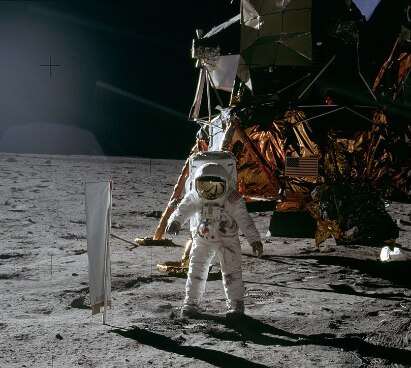Space collaboration between the U.S. and Switzerland
Switzerland has a longstanding partnership with the United States in the space sector as well. When NASA completed its Apollo 11 mission back in 1969, Switzerland was the only foreign country that contributed to this big project with an experiment on the Apollo 11 lunar module: after the first landing on the moon, Buzz Aldrin deployed the flag-like Solar Wind Composition Experiment, manufactured by the University of Bern and the Swiss National Science Foundation and developed by Johannes Geiss, a professor at the University of Bern. The experiment was designed to study the sun’s continuous flux of charged particles or the so-called “solar wind”. It helped to resolve the competing theories about the origins of the solar system, planetary atmospheres and solar wind dynamics.
The United States and Switzerland also collaborate within the framework of the International Space Station (ISS), one of the greatest projects ever realized. For instance, universities and research institutions from Switzerland as well as the United States have been involved in the Alpha Magnetic Spectrometer experiment since it first began. This is a particle detector on the ISS by means of which scientists are looking to find out where cosmic rays come from and how they affect life on Earth.
Many Swiss companies within the aerospace sector deliver key elements for space missions. The industry consists mainly of small and medium-sized enterprises renowned for their cutting-edge technology and knowledge. A number of the world's leading satellite launch companies depend on the use of Swiss technology.


